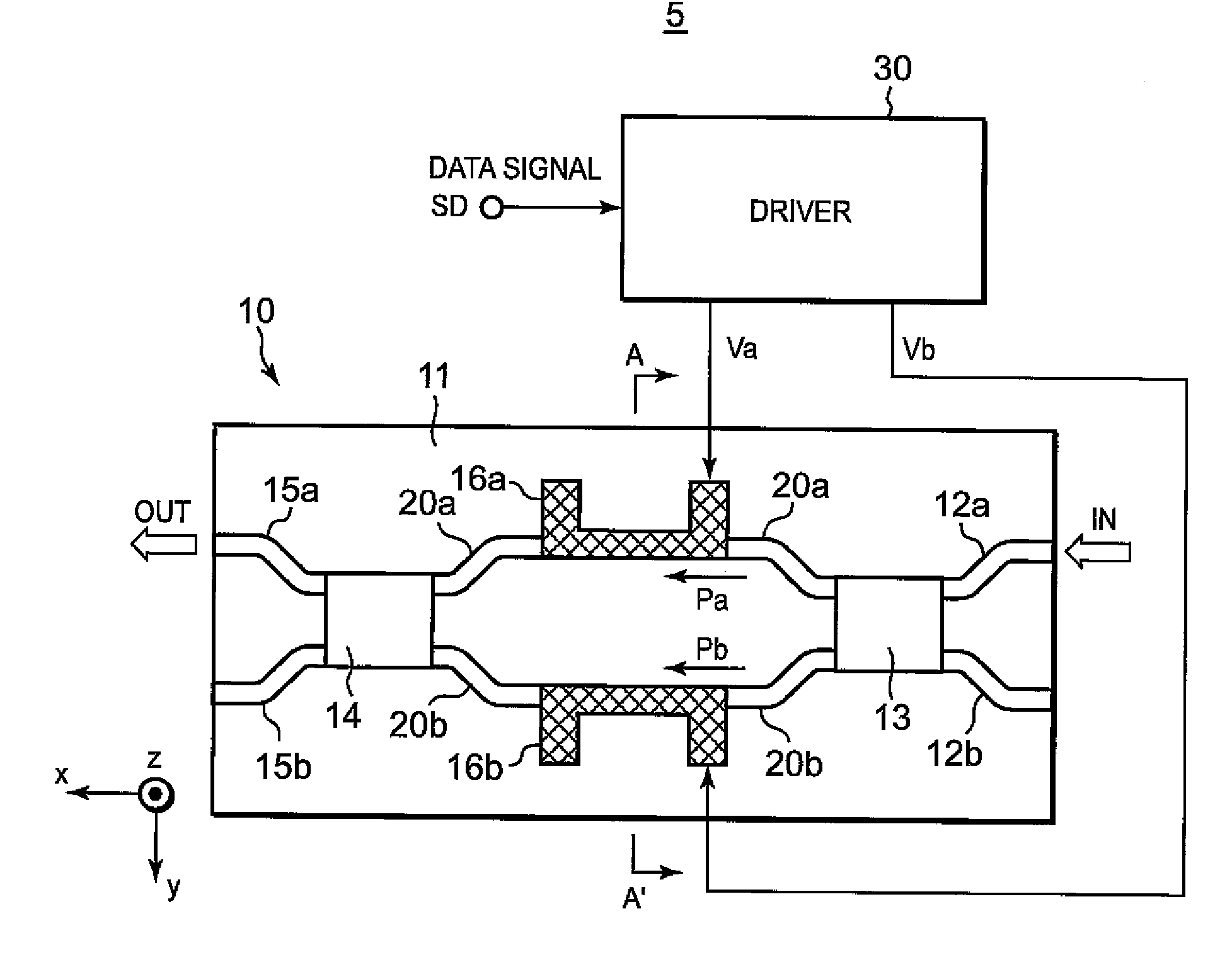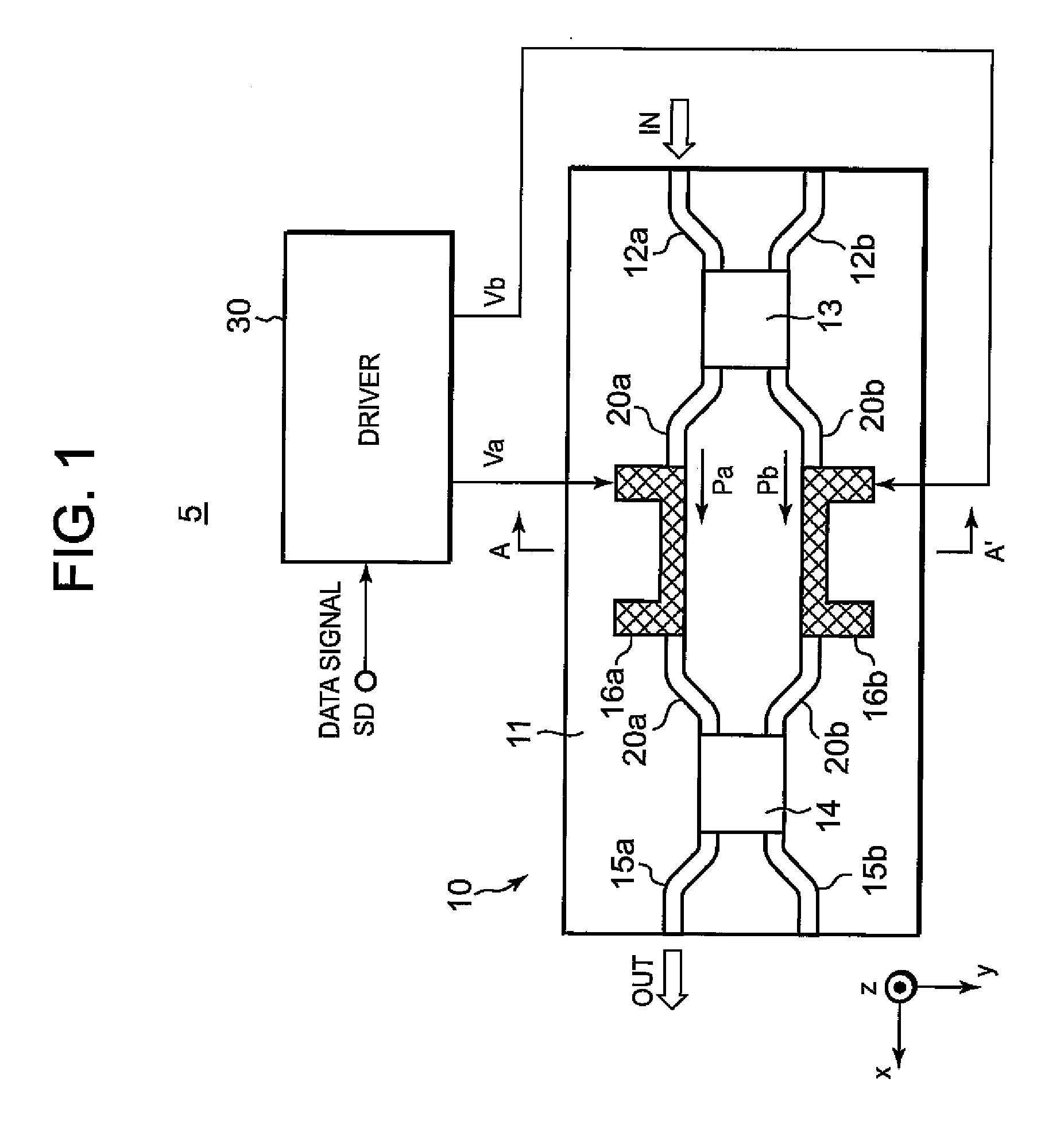Light modulating device
a light modulating device and light technology, applied in the field of light modulating devices, can solve the problems of low absolute value of chirp amount, degraded manufacturing yield, and high modulation voltage, and achieve stable implementation, satisfactory reproducibility, and stable long distance transmission
- Summary
- Abstract
- Description
- Claims
- Application Information
AI Technical Summary
Benefits of technology
Problems solved by technology
Method used
Image
Examples
first preferred embodiment
[0023]FIG. 1 is a diagram showing a configuration of a light modulating device 5 illustrative of a first embodiment of the present invention. The light modulating device 5 comprises a Mach-Zehnder light modulator (MZ light modulator) 10 and a driver (driver circuit) 30 of the MZ light modulator 10. A plan view of the MZ light modulator 10 is shown in FIG. 1. FIG. 2 is a sectional view taken along line A-A′ (FIG. 1) of the MZ light modulator 10.
[Configuration of Light Modulating Device]
[0024]The driver circuit 30 of the light modulating device 5 is connected to a common electrode 17 and first and second modulation electrodes 16a and 16b of the MZ light modulator 10 to be described later. The driver circuit 30 is supplied with a data signal SD. The driver circuit 30 generates modulation voltages Va and Vb, based on the received data signal SD and applies the same to the first and second modulation electrodes 16a and 16b respectively. Incidentally, the operation of the driver circuit 3...
second preferred embodiment
[0062]The above embodiment has explained the MZ light modulator wherein the thicknesses of the core layers (thicknesses of modulation layers) of the first and second arm waveguides are made asymmetric. In the present embodiment, first and second arm waveguides are identical in layer structure and core layers are set equal in thickness. However, a branching ratio of an optical demultiplexer 13 is shifted from 1, and the intensities Pa and Pb of light waveguided by the first and second arm waveguides 20a and 20b differ from each other (Pa≠Pb).
[0063]A description will hereinafter be made, as an example, of the case where the intensity (Pb) of light waveguided by the second arm waveguide 20b is larger than the intensity (Pa) of light waveguided by the first arm waveguide 20a (Pa<Pb).
[0064]Even in such a case, both negative and zero chirp operations can be realized by performing modulation in a manner similar to the first preferred embodiment. Described more specifically, a driver circui...
PUM
| Property | Measurement | Unit |
|---|---|---|
| thickness | aaaaa | aaaaa |
| width | aaaaa | aaaaa |
| electric fields | aaaaa | aaaaa |
Abstract
Description
Claims
Application Information
 Login to View More
Login to View More - R&D Engineer
- R&D Manager
- IP Professional
- Industry Leading Data Capabilities
- Powerful AI technology
- Patent DNA Extraction
Browse by: Latest US Patents, China's latest patents, Technical Efficacy Thesaurus, Application Domain, Technology Topic, Popular Technical Reports.
© 2024 PatSnap. All rights reserved.Legal|Privacy policy|Modern Slavery Act Transparency Statement|Sitemap|About US| Contact US: help@patsnap.com










